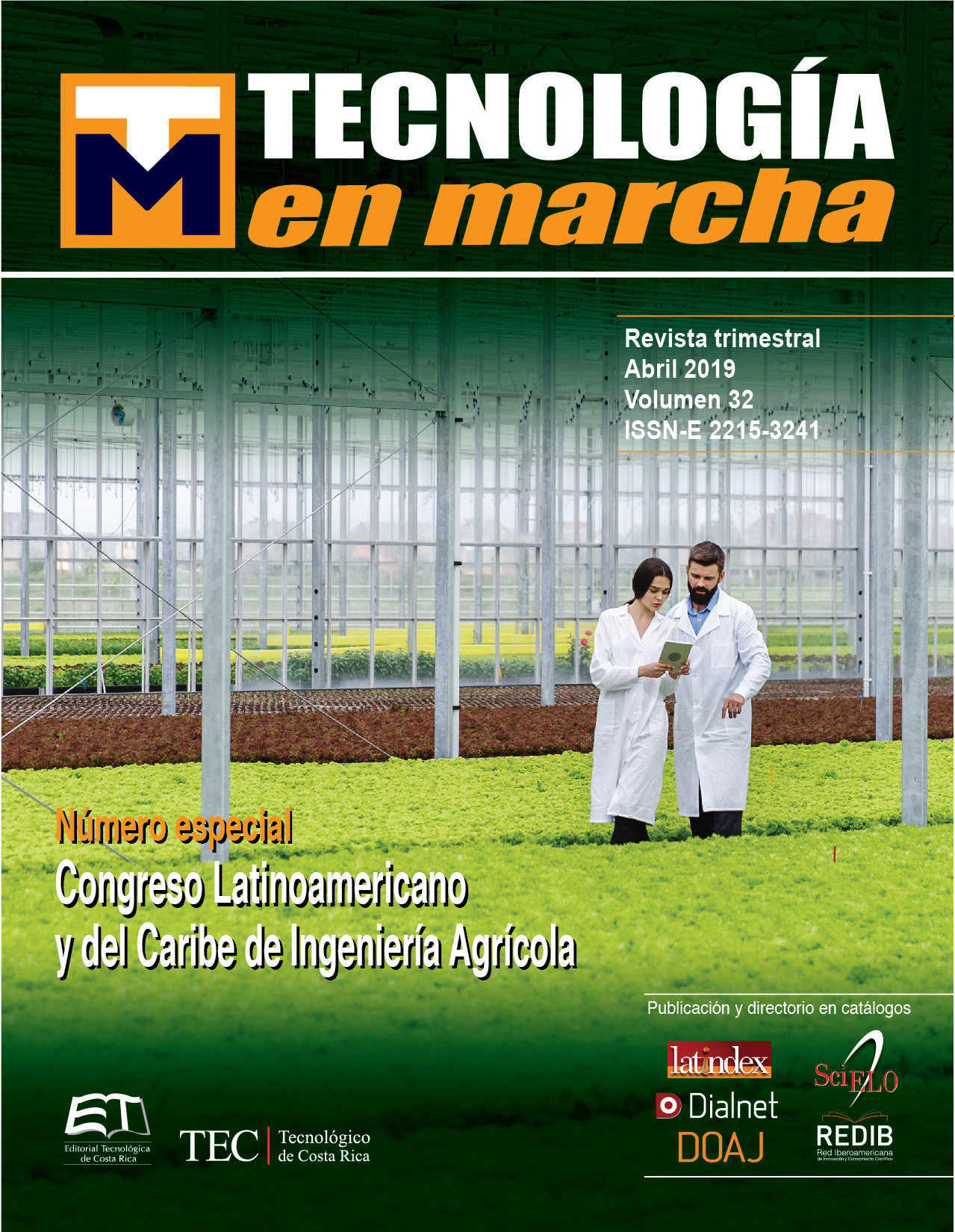Longitudinal distribution of granulated fertilizer in different tiltings and position of the thread position of a double helicoidal doser
Main Article Content
Abstract
The distribution of fertilizer by helical screw feeders is an essential factor for the establishment and yield of the crops. The objective of this work was to measure the efficiency of a new fertilizer of double thread fertilizer. The experiment was carried out on test bench with a treadmill (5.4 km h-1), using a completely randomized design, using a test bench equipped with a treadmill. A fixed dose of 220kg ha-1 was used, and 3 threads (22mm, 17mm, and 34mm) were tested at 54 rpm. Each test was performed every 0.09 m in a total of 5.4 m, being simulated 3 longitudinal slopes: 0 °; -11 ° and + 11 °, and 4 thread coupling positions in the machine, position A - the two threads in the same position, B - the right thread facing up, C - totally opposite threads and D - , with 3 replicates. The coefficient of variation (CV) fertilizer distribution in relation to the working slope and the position of the threads and amplitude of distribution were as parameters. There was no significant difference between the slopes tested, in level the mean CV was 36.29%, in -11 ° was 37.11% and + 11 ° was 36.57%. Differences occurred in the different work positions and type of threads, with CV at position A of 38.65%, B 37.18%, C 35.63% and D 35.18%. The dosage shows a relatively high variation of the distribution, but in contrast, this variation does not vary significantly in the factors studied.
Article Details
Los autores conservan los derechos de autor y ceden a la revista el derecho de la primera publicación y pueda editarlo, reproducirlo, distribuirlo, exhibirlo y comunicarlo en el país y en el extranjero mediante medios impresos y electrónicos. Asimismo, asumen el compromiso sobre cualquier litigio o reclamación relacionada con derechos de propiedad intelectual, exonerando de responsabilidad a la Editorial Tecnológica de Costa Rica. Además, se establece que los autores pueden realizar otros acuerdos contractuales independientes y adicionales para la distribución no exclusiva de la versión del artículo publicado en esta revista (p. ej., incluirlo en un repositorio institucional o publicarlo en un libro) siempre que indiquen claramente que el trabajo se publicó por primera vez en esta revista.

